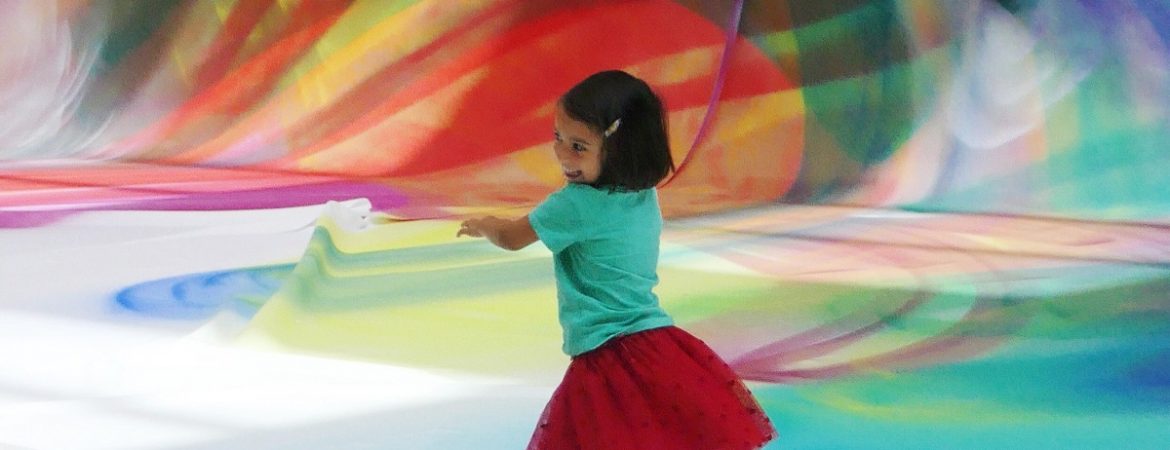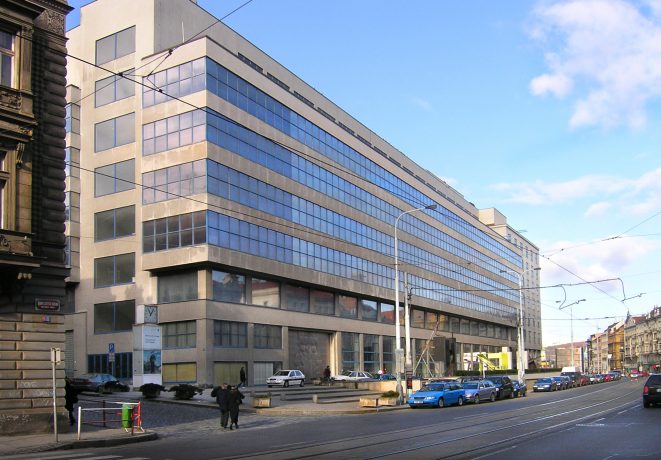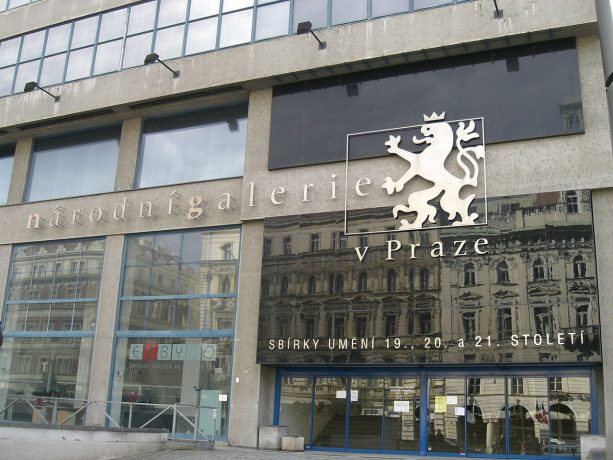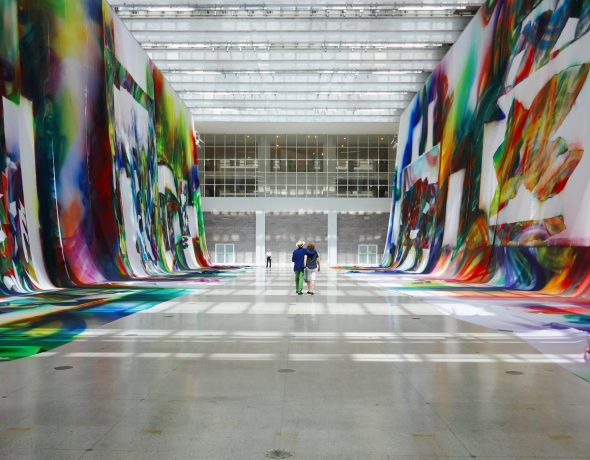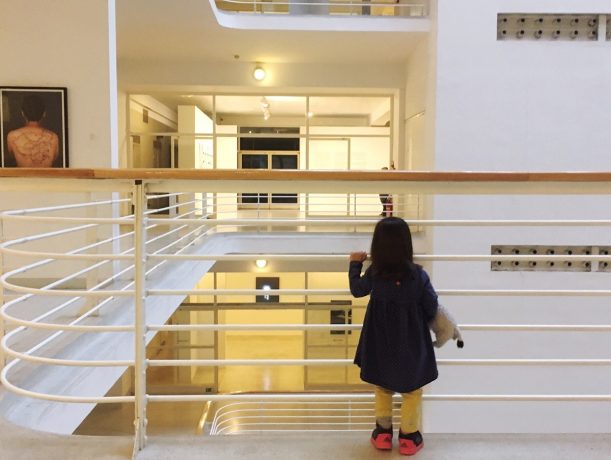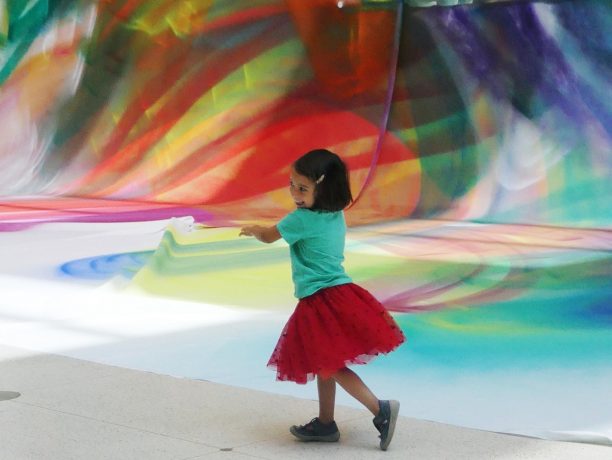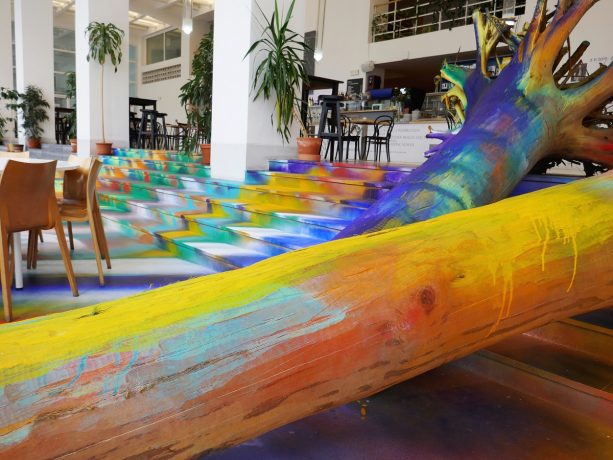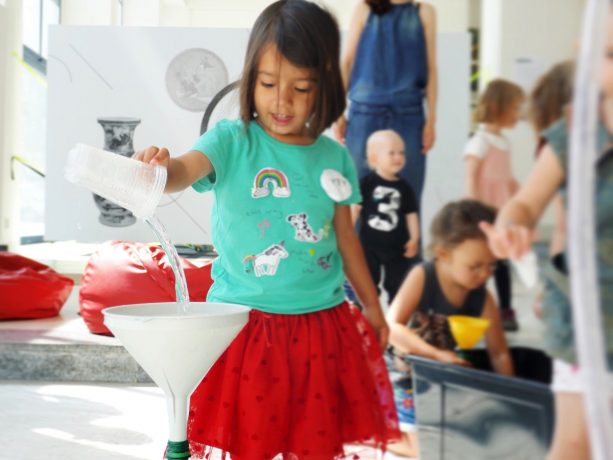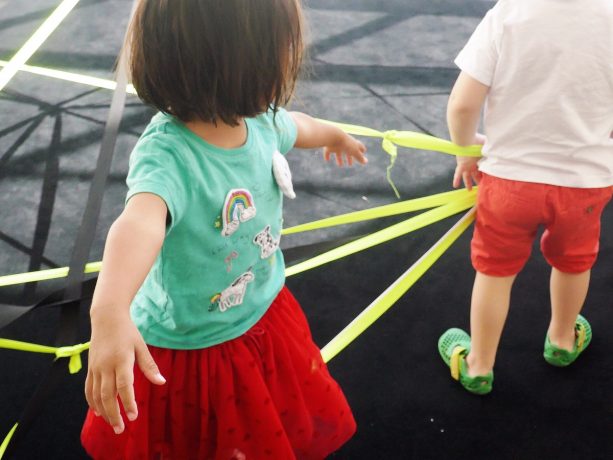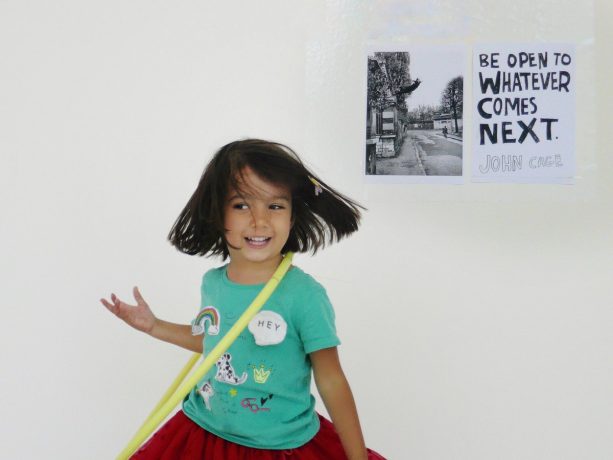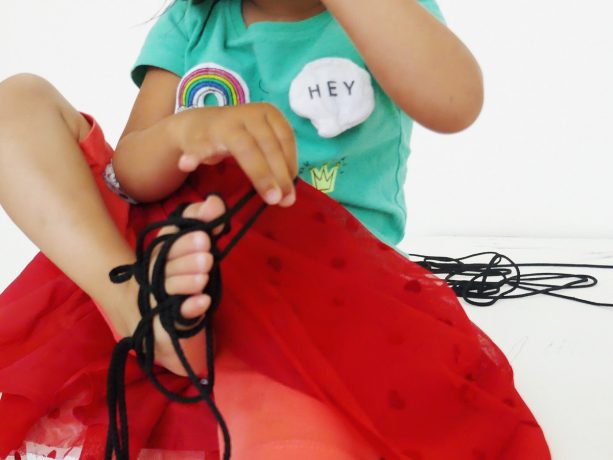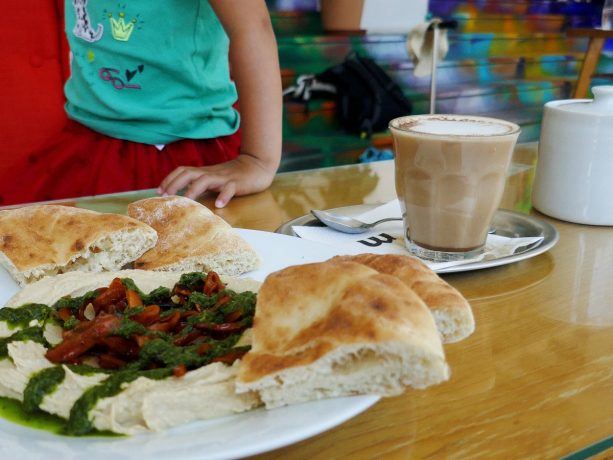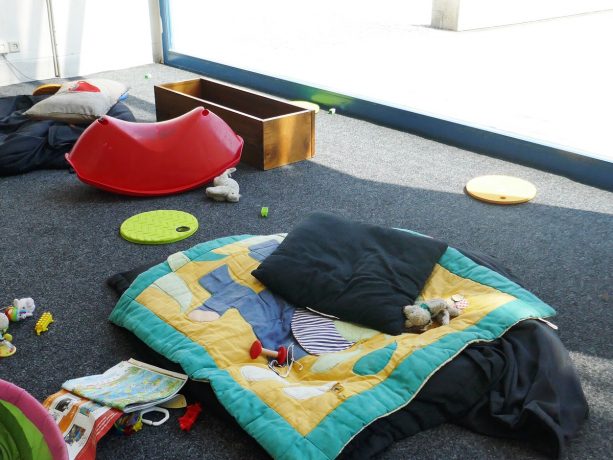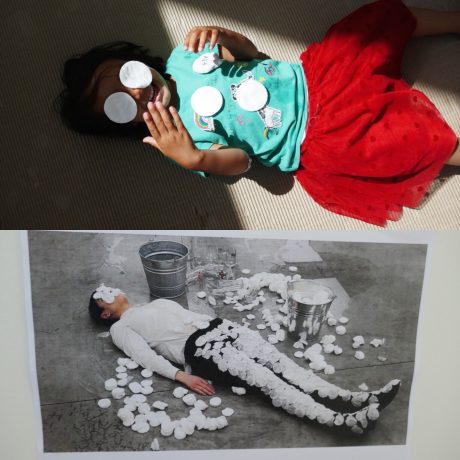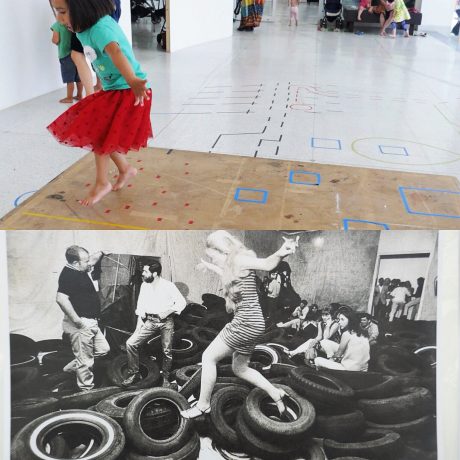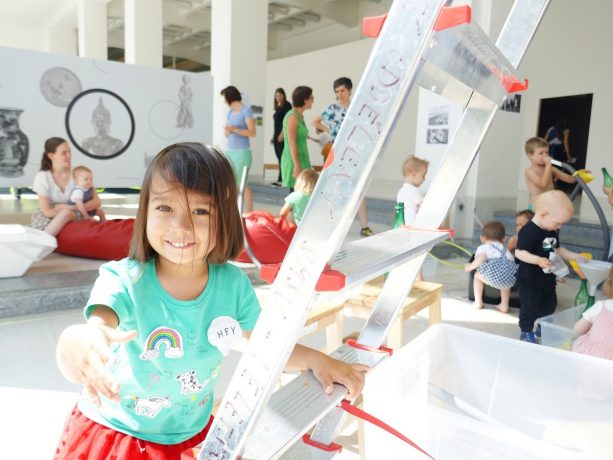The National Gallery in Prague houses its collection across a variety of impressive buildings; from Medieval art in the quiet beauty of a convent to expressionist portraits housed in an 18th-century riding school. The gallery’s largest collection though is in the Trade Fair Palace – a beautiful example of 1920s Czech Functionalism. Step inside, and you are surrounded by white space and clean lines, with light flooding through its large glass ceiling. It all feels very calm, serene – and well, rather grown-up.
Not entirely, then, where you would expect to find toddlers covering themselves with black paint. Or preschoolers whooping with delight as they splash in large pools of water. And yet, as part of the gallery’s programme for children, this kind of noisy, messy, exploratory fun is precisely what is on offer.
The gallery runs morning and afternoon workshops for children aged 1.5 – 5 years old on Wednesdays and Thursdays during term time. Each session lasts just over an hour and is inspired by either an individual artist or an artistic movement.
What makes it a particularly joyful affair is the sense of freedom. There are no lengthy expositions on technique or expectations about producing a polished final piece. Instead, the emphasis is on the (often messy) process. Little ones roam between activity stations. Mums chat. A group of children spontaneously start building a collaborative sculpture from giant tubes. A family giggle at the sight of their projected images on the large white wall. It always feels like a morning very well spent.
Me and my toddler have been coming to The National Gallery in Prague to wreak a little havoc for over a year now. Last time our workshop was inspired by avant-garde performance art. A topic that sounded fairly inaccessible for a group of under five-year-olds. And yet, when presented with some art pieces from the 1960s Fluxus movement – it was, of course, the children in the room that immediately understood and captured the original spirit of rebellion. Water was tipped and splashed with abandon. Cotton balls were dampened, squeezed and worn. Tables were leapt over.
Similarly, my daughter adored the area of entangled ribbons, inspired by the work of the American visual artist, Senga Nengudi. Here she spent time exploring the tensions and pull of the ribbons and finding the spaces to squeeze her body through. A playful lesson in scientific forces, as well as a great energy burner.
The modest entry fee to the workshops (US$2.7 per person) also allows you same-day access to the rest of the gallery, including some of the more expensive temporary exhibitions. Although most small tikes probably won’t have the energy or patience for a full museum tour, it does allow parents a quick peek at some of the extensive collections before heading home. I recently took the opportunity to visit the new ‘Wunderbild’ exhibition by Katharina Grosse. A beautiful explosion of color – which met with both mine and my toddler’s heartfelt approval.
The color, natural light and family-friendly atmosphere continues in the gallery’s Café Jedna. This is currently home to another vibrant installation by Katharina Grosse - this time in the shape of some striking rainbow-colored tree trunks. There is also a large play corner with a smattering of toys, high chairs, a changing table and a kid-friendly menu of soups, sandwiches and some delicious desserts. All of which makes it a particularly welcome pit-stop. And, it should be said, the hummus dishes and drinks menu are a little bit special too.
Of course, museums offering children’s workshops is nothing particularly new. But, in welcoming the very smallest of artists through their doors, and allowing them the freedom to explore, get messy and create, the National Gallery in Prague is showcasing the very best of what museums can do. Rather than a cool, removed place reserved for the artistic elite; it is a dynamic part of the community. Bringing art to life and providing young children and their carers a creative highlight in their week. And for that, I suspect it would win the admiration not only of the 1960s avant-garde movement, but of many other great artists too.
